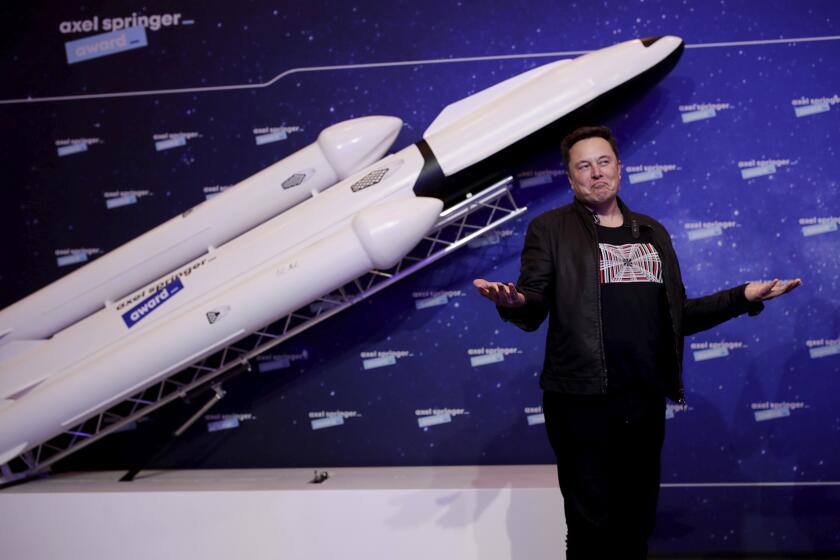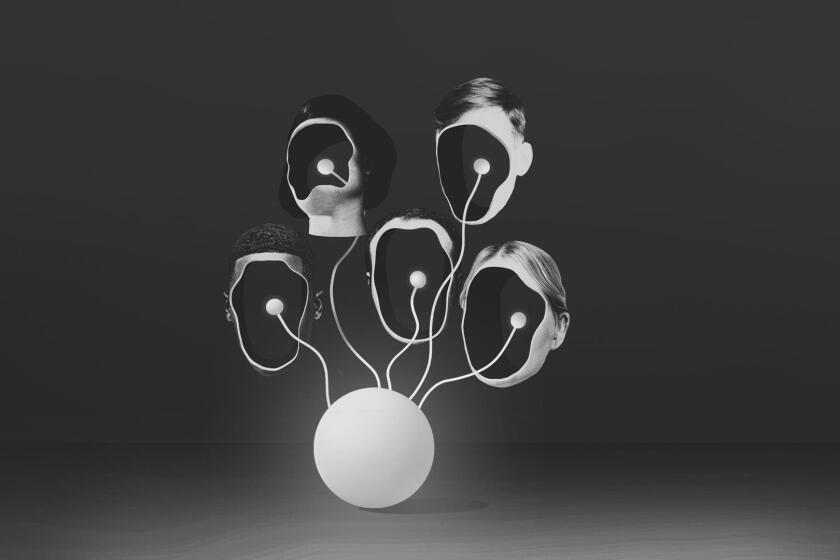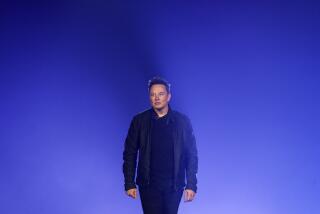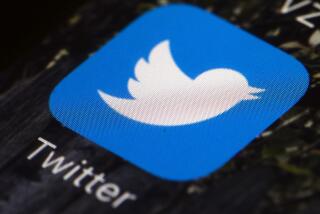If Elon Musk’s Twitter plan goes poof, it wouldn’t be the first time
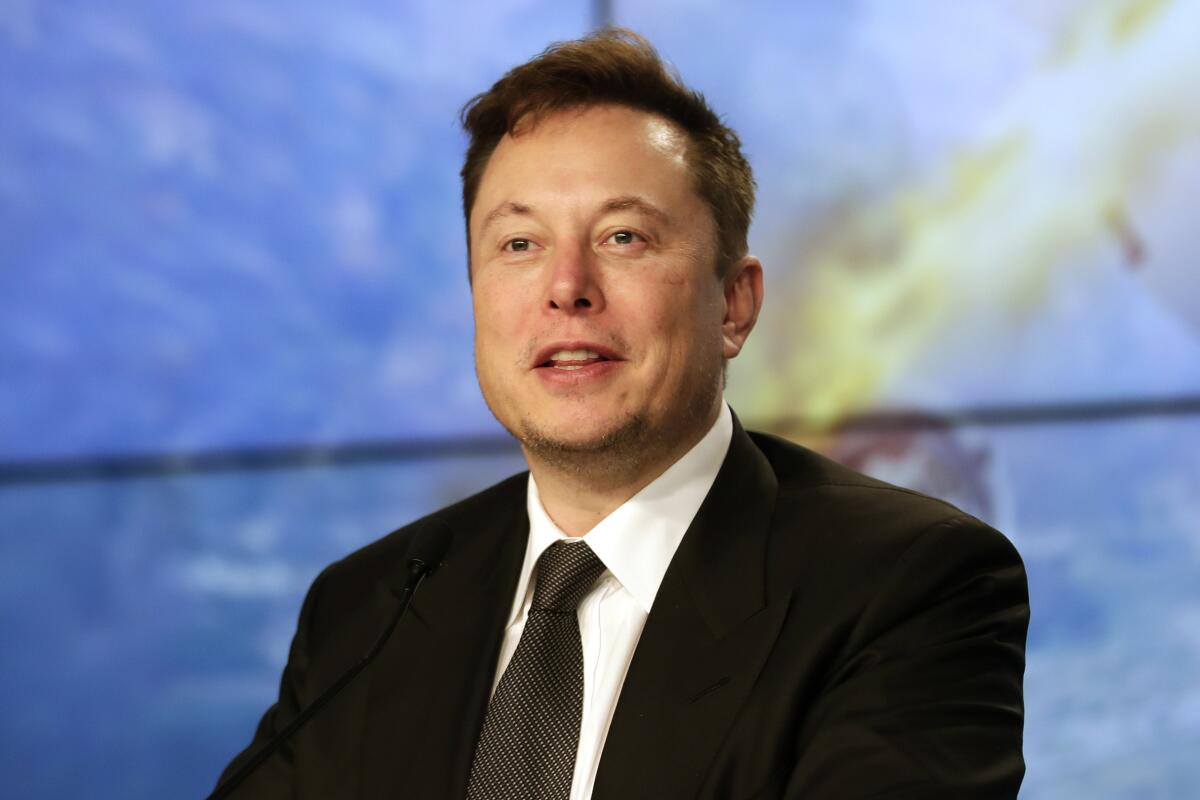
Elon Musk may not be delivering on the Twitter acquisition he promised after all.
It’s not the first time he’s fallen short, backed out or abruptly changed course after making a big, showy promise of innovation. In fact, it’s not even the first time he’s done that in the last six weeks, during this specific set of negotiations with Twitter.
For Musk — a serial entrepreneur, controversy-stirring celebrity, terminally online gadfly and the richest man in the world by some counts — abruptly tapping the brakes on a $44-billion tech acquisition with a vague tweet is, well, just another Friday.
“Twitter deal temporarily on hold pending details supporting calculation that spam/fake accounts do indeed represent less than 5% of users,” the Tesla and SpaceX chief executive wrote early Friday morning in a post on the social network he was otherwise slated to buy. Attached was a link to an 11-day-old Reuters article detailing how the platform’s current management recently pegged the prevalence of spam accounts — a pet issue for Musk and one he’s hinted he’ll tackle if he takes the app private — at less than 5% of monetizable daily active users.
Elon Musk has appeared to waste no time before violating his merger agreement with Twitter.
More than two hours later, he replied to himself: “Still committed to acquisition.”
Shares of Twitter’s stock dove in response, falling to almost $40, suggesting strong doubt on Wall Street that the deal would ever close. Meanwhile, shares in Tesla leapt 7%, to as high as $786.50, after having tumbled more than 25% from the time Musk started selling $8 billion in the company to finance the Twitter deal.
Musk’s imbroglio with Twitter has been marked by reversals and false starts from the very beginning. When he revealed on April 4 that he’d acquired a 9% stake in the social network, it seemed that might be the extent of his engagement; he had, after all, filed as a passive investor, meaning he was barred under U.S. securities law from pursuing control of the company.
Yet two days later, he filed an update: Actually, he’d be an active investor after all.
To further complicate things, Musk’s initial acquisition was quickly followed by chatter from both him and Twitter Chief Executive Parag Agrawal that Musk would be joining the company’s board (and capping his stake at 14.9% in the process).
“I’m excited to share that we’re appointing [Musk] to our board!” Agrawal tweeted, to which Musk responded: “Looking forward to working with [Agrawal and the] Twitter board!”
Or not. By April 11, Musk was out.
By the time Musk finally made his big move — a bid to take Twitter private at $54.20 a share — it wasn’t clear what his plan was, or whether he even had one. Analysts were skeptical the offer would lead anywhere, as were traders, with shares lingering well below the offer price. Maybe Musk was too. “I’m not sure I will actually be able to acquire it,” he said during an interview at a TED conference.
But by April 25 — still the same month as when he’d first announced his 9% stake — Twitter’s board had accepted the bid. Agrawal assured employees that layoffs weren’t planned; analysts began thinking about what this meant for digital speech; Musk said he would allow former President Trump, currently banned, to come back on the app.
Now all that is on hold. Again. (Twitter declined to comment. Musk does not maintain a press office.)
Unless Musk’s tweet was yet another feint. “‘Temporarily on hold’ is not a thing,” Bloomberg financial columnist Matt Levine wrote Friday, suggesting it might have been a gambit to force Twitter to renegotiate to a lower price or face the risk of an ugly legal battle.
For Musk and Musk-watchers, these are familiar cycles.
Following is a partial list of promises and predictions Musk has failed to deliver on:
A Tesla semi truck
On Nov. 11, 2017, Musk announced Tesla would be building an electric semi truck, trumpeting aggressive specifications on efficiency and range. The company began taking deposits from potential customers. Five years later, Tesla has announced no firm plan to build and deliver semi trucks.
A Tesla pickup truck
The same day, Musk announced Tesla would sell a pickup truck, which, he later claimed, would be “a better truck than an equivalent F-150 and a better sports car than a standard [Porsche] 911.” The company has been taking deposits on what it calls its Cybertruck since 2019. So far, the weirdly angular vehicle exists only in prototype, although Musk said recently the company plans to begin production next year in Austin, Texas.
As cryptocurrencies and NFTs gain popularity, addiction specialists are hearing from people whose compulsive trading resembles full-blown dependency.
A new roadster
As an added surprise at the semi-truck event, held at SpaceX headquarters in Hawthorne, a hot-looking sports car called the Roadster was wheeled before a crowd that included Amber Heard, Musk’s girlfriend at the time. Musk later said the car — a radical update of the first model Tesla offered back in 2008 — might be powered by jet engines that would allow it to fly. The company began accepting $250,000 deposits. Although Musk would go on to send a Roadster into space, to date, no plans to actually build and sell the car have been announced.
A network of autonomous taxis
In April 2019, Musk told a Wall Street audience there would be 1 million fully autonomous Tesla robotaxis deployed by 2020. Although competitors such as Waymo and Cruise have debuted limited-scale robotaxi networks, Tesla has done nothing of the kind.
Full Self-Driving
In 2016, Tesla began selling a feature called Full Self-Driving that, six years later, is still not capable of full self-driving. It costs $12,000 a year.
Brain chips
Musk has said in several different venues that his Neuralink brain chip company could one day stop epilepsy attacks, restore limb function, fix speech impediments, cure Alzheimer’s and bring eyesight to the blind. The company has announced no serious progress on any of these claims, and neuroscience experts have raised doubts about how realistic they are. However, earlier this year, the company acknowledged eight monkeys had been killed undergoing brain chip experiments.
And others
A longer list of Musk’s unkept promises and unaccountable predictions would include: A full network of solar-powered Supercharger stations; backup battery storage at Supercharger sites affected by wildfire-induced power blackouts in California; producing 1,000 solar roofs a week; one-hour turnaround time for body work at Tesla service centers; a solar-powered battery factory in Nevada; tunnels with vehicles on electric skates that could take fans to Dodger games at 150 miles per hour; and, recently, a humanoid robot to be introduced “hopefully next year.”
Then, of course, there was Musk’s notorious and legally consequential claim that he had “funding secured” to take Tesla private in 2018 at $420 a share. Should the Twitter deal prove to be vaporware, that episode will resemble a form of unintentional prophecy.
